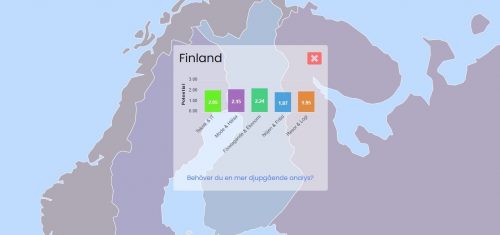
If you have a solid foundation in your SEO, entering a new market can be a way to grow quickly. Good SEO in one country carries over to the next, you inherit much of the strength, and that’s why you must keep SEO in mind when expanding internationally.
A strong site, with high trust from Google, can be the base you need to stand on when entering a new market. If you’ve built the site according to best practices and have a strong backlink profile behind you, it can give you a head start when expanding abroad. Done right, your new site inherits the strength and trust you’ve earned in your home market, which is why it’s incredibly important to think about SEO when going international.
How do you do international SEO?
If you’ve decided to move forward into a new market, or several new markets, there’s a lot of technical work involved. You’ll need to make the right decisions about your site or sites. Should you keep everything on one domain, or is it better with country-specific top-level domains? You’ll definitely need to tag properly with Hreflang, and you’ll have many other decisions and technical implementations to handle. Then you’ll need local links, and this is where most people get stuck. How do you know who is good at link building in the country you’ve chosen?
It’s easy to make mistakes with link building, and the quality of providers varies greatly. One might be cheap and good, another expensive and bad, and in between you’ll find every possible combination. My advice is to choose carefully, especially if you’re entering markets with higher competition.
Brath can help you
At Brath we’ve worked with international SEO for a long time; in fact, it’s the background of the agency where our very first project was SEO in highly competitive segments across 22 countries. Today, we work with SEO in the following countries:
- USA
- UK
- Canada
- Australia and other English-speaking markets
- Spain
- Latin America including:
- Costa Rica
- Argentina
- Panama
- Mexico
- Dominican Republic
- Chile
- Peru
- Guatemala
- Italy
- France
- Norway
- Finland
SEO in Norway and Finland
In many ways, the SEO landscape is different in our neighboring countries. Norway, Finland, and Denmark each have their own characteristics when it comes to ranking in search results. My recommendation is rarely to expand into the Nordics first, but of course there are reasons beyond SEO to enter these markets. That’s why we take a closer look at Norway and Finland here; Denmark is quite different and deserves its own article.
Norway & Finland
In many ways, Norway and Finland are our closest neighbors. We won’t cover Denmark today, as that market is significantly different—I’d describe it as “messier SEO” for lack of a better term. Finland and Norway, however, have greater similarities to Sweden and are therefore markets we’ve chosen to be present in. Both also share characteristics that differ somewhat from Sweden.
The limited number of sites
The first trait that differs from Sweden is the much smaller number of websites. Both Norway and Finland have smaller populations, which results in fewer sites overall. This often means competition for keywords is lower, but it also has another consequence: there are far fewer domestic links available. The effect of this is that international players often have an advantage.
It’s harder to become an authority in these markets using only local links. Even though local links carry more weight in the results, the power of an American company building local presence can easily surpass them, simply because they already have far more built-in authority.
The SEO industry is smaller
The SEO industry in these two countries is much smaller than in Sweden. This contributes to lower competition in many ways. One reason is simply that there are fewer skilled SEO professionals. Sweden is ahead in SEO expertise, partly because there is a larger talent pool. Another reason is that Sweden got a big push during the poker boom.
Norway and Finland didn’t experience the same proximity to that boom as the Swedish market did. When Swedish (numerous and successful) gaming companies needed to compete internationally, Swedish SEOs had to roll up their sleeves and become better in order to compete for the world’s toughest keywords across virtually all markets. That intense competition was a strong driver of growth for Swedish SEOs.
Competition is lower, much lower

This leads us to the final point. Competition in the search results is far lower in both Finland and Norway, with some exceptions depending on vertical. It’s possible to get very far in these two countries with relatively modest effort. As long as the site’s language is good and there is some authority, you can often achieve strong results. Translating a webshop or site can, in many cases, be enough—provided the translation is high quality. Worth noting, however, is that the overall potential is also smaller. Even adjusted for competition, the possible returns in Finland (as you can see in the image above, taken from SEOkartan.se) are significantly lower than in Sweden.
